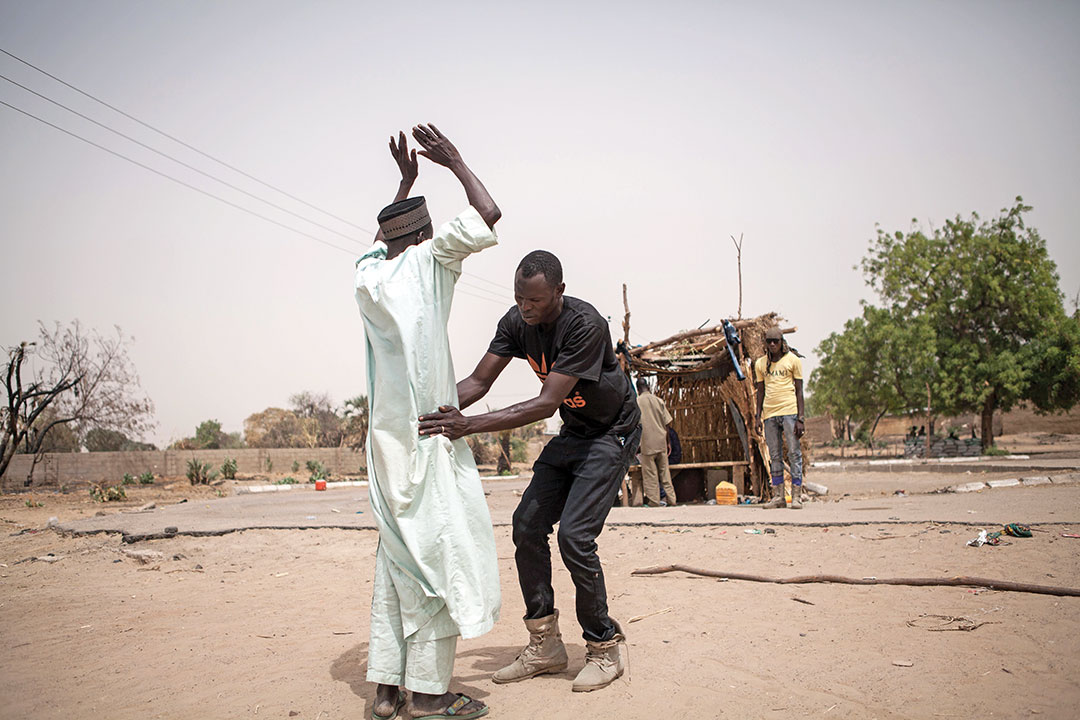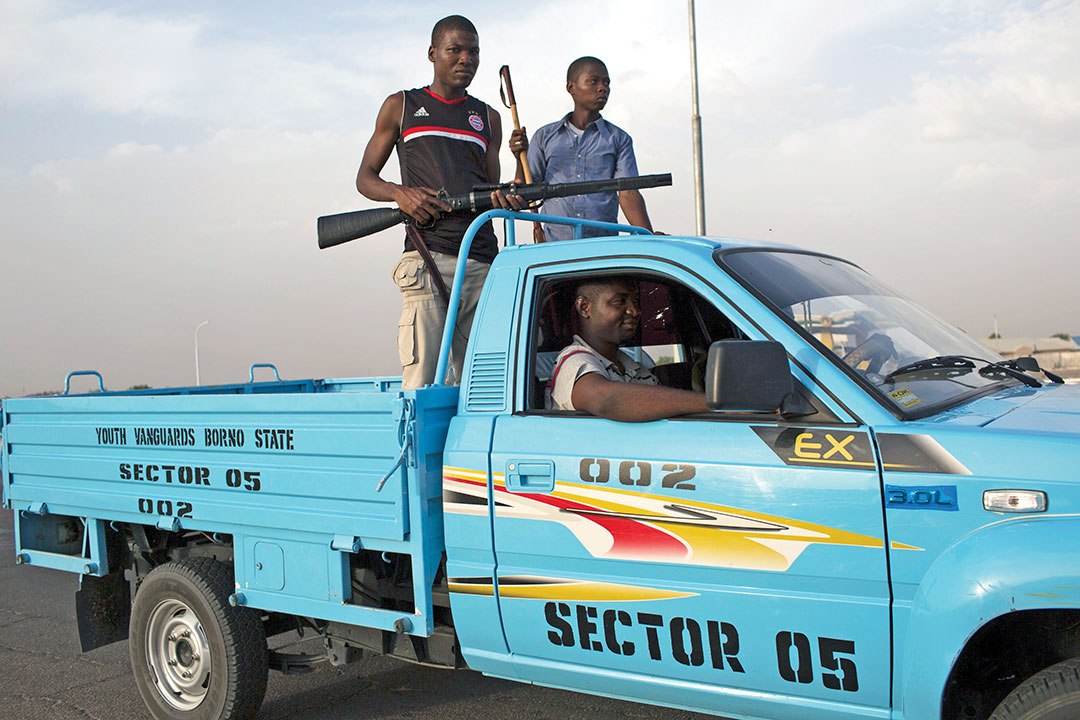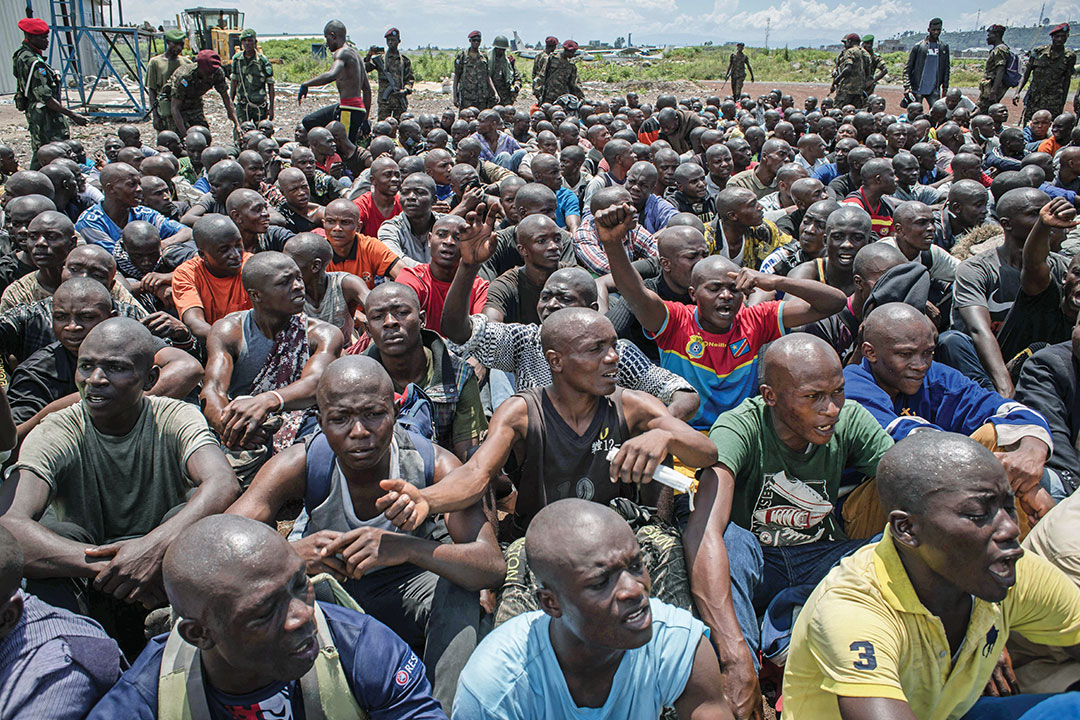ADF STAFF
Immediately after Burkina Faso’s National Assembly unanimously approved arming civilian volunteers
to help battle extremists in January 2020, the risks
were clear.
Despite two weeks of training, an age requirement of 18 and a “moral investigation,” the tactic seemed fraught. “It’s not a question of making cannon fodder,” then-Defence Minister Chérif Sy said. “We want to prevent these volunteers from becoming militias.”
Corrine Dufka, West Africa director for Human Rights Watch, citing documented instances of abuses by Burkinabe soldiers, had a dour outlook. “This new plan to subcontract security operations to civilians threatens to lead to even more abuses,” she told Al Jazeera at the time.
Using armed civilians in the national security sector raises many questions: How can the government prevent poorly trained civilians from violating human rights? How will vigilantes avoid the temptation to attack rival ethnic groups? How will combatants distinguish between armed extremists and gun-toting civilians when the fog of battle descends? And how will governments that authorized arming civilians effectively disarm them when their services are no longer needed?
“The clearer vigilantes’ objectives and mandate are set in advance, and the greater the oversight by national and local leaders, the state military and local communities, the more effective the group can be and the less likely it will veer away from community defence and counter-insurgency goals,” said a 2017 International Crisis Group report.
However, the report continues, fragile states are more likely to depend on vigilantes and are less able to police them and prevent their abuses.
This held true in Burkina Faso. By June of 2020, a National Assembly report said there was an “inadequacy of resources” set aside to train, supervise and oversee the nation’s Homeland Defence Volunteers (VDP), according to a 2021 paper by Antonin Tisseron titled, “Pandora’s box. Burkina Faso, self-defense militias and VDP Law in fighting jihadism.”

CHARACTERISTICS OF VIGILANTE GROUPS
Burkina Faso is not the only nation on the continent to rely on armed civilians for security. Some efforts have improved security, but the risks seem to rival the benefits. Armed vigilante groups have a long history in Africa. Sierra Leone had a group called the Kamajors, who were armed to protect against Revolutionary United Front rebels in the 1990s. In Uganda, the Arrow Boys formed in 2005. They protected civilians from Lord’s Resistance Army extremists.
Vigilantes are a subgroup of nonstate armed militias and are “generally understood as groups which concerned citizens have joined for self-protection under conditions of local disorder,” according to the 2023 report for the United Nations Development Program (UNDP), “Understanding and Managing Vigilante Groups in the Lake Chad Basin Region.”
Vigilante groups, the authors wrote, are marked by three main characteristics: They tend to be large and have access to weapons; they have the ability to impose violence that could alter the balance of peace; and they are not part of formal state security institutions, although they might have some relations with such groups.
They also usually fit into three broad categories. Some organized to fight violent extremism, such as the Civilian Joint Task Force (CJTF) in northeast Nigeria. The CJTF is perhaps the most well-known group of its kind on the continent. Others form to fight crime. The third type is “manipulated by the state to target ethnic, religious or political rivals,” the report states.
The CJTF formed in the aftermath of the April 2013 Baga massacre, in which Nigerian soldiers were found to have killed up to 200 civilians and burned 2,000 homes and businesses after a Boko Haram attack on a military post, the UNDP report states. That attack killed a soldier.
“Puzzlingly, what happened next was not a radicalization of the victimized civilians in Borno State, but the rise of anti-Boko Haram vigilantes eager to work with the Nigerian security forces in the volatile state to both repel Boko Haram extremists and protect their communities,” the report states.

The CJTF is thought to have up to 30,000 members spread throughout Borno State. After the government formally recognized the group in 2013, the state-sponsored Borno Youth Empowerment Scheme enrolled 1,850 CJTF members in a four-week paramilitary training course. Some trained at Ghana’s Kofi Annan International Peacekeeping Training Centre. CJTF members also got a $48 monthly stipend. Initially, the vigilantes were armed with bows and arrows, knives, machetes, and sticks. Eventually, some were trained and allowed to carry pump-action shotguns.
In the beginning, the CJTF recorded significant victories against insurgents, which helped drive Boko Haram from Maiduguri, according to a report for ADF by Dr. Ernest Ogbozor, a Nigerian expert on countering violent extremism in the Lake Chad Basin.
After some success, the group came to be associated with killing suspects, using children in their ranks, bribery and extortion at checkpoints, cattle rustling, dealing in stolen goods, and exploiting women, the UNDP report states. CJTF vigilantes also have been credibly accused of torturing Boko Haram militants and other captives during questioning.
Burkina Faso’s government-sponsored VDP forces have suffered heavy casualties in their fight against violent extremists, according to a December 2023 report by International Crisis Group. Civilians are caught in the middle of the fighting. President Ibrahim Traoré, an army captain who took power in a September 2022 coup, has recruited and armed up to 50,000 additional VDPs, marking a significant increase in the use of armed civilians against Islamic State group and al-Qaida-backed extremists, which the military has failed to contain.
In addition to being pushed to the front lines with inadequate training, some of these Burkinabe fighters are targeting civilians, such as ethnic Fulani, who largely have been left unrecruited because they are thought to collude with extremists. The presence of VDPs also exposes noncombatants to extremist reprisals.

“Now that the authorities have placed VDPs at the heart of their security plan, they cannot instantly backtrack without the risk of undermining security,” the Crisis Group report noted. “In addition, the VDPs are an important base for President Traoré.”
The Democratic Republic of the Congo government also is relying on help from armed civilian militias. President Félix Tshisekedi called on young people in November 2022 to organize “vigilance groups” and support the army against M23 rebels in the east.
News website Afrikarabia reports that the “Wazalendo” most likely is an amalgamation of eight to 10 armed groups using the name, which means “patriots” in Kiswahili. Researcher Henry-Pacifique Mayala told Afrikarabia that “when we see the intensity of the fighting and their duration, it seems clear that the Wazalendo have been equipped with weapons and ammunition, and benefit from logistical support.”
Civilian groups may support the government initially in fights against extremists and other militias, but arming them comes with many risks. Uganda-based security analyst David Egesa told Anadolu Agency news service that armed groups might be able to help defend against the M23 in the short term, but it could also strengthen militia groups. The DRC “might discreetly allow the militia to work together against M23,” he said. “But such a twisted game could, in the longer term, embolden the militias … it’s a dangerous situation.”

2022 before boarding a plane for a training center. AFP/GETTY IMAGES
MANAGING ARMED GROUPS
The UNDP report on Lake Chad Basin armed civilians notes that “government neglect of vigilante frustrations and expectations can be a recipe for trouble. … For better or worse, vigilantes are here to stay.”
Again, Burkina Faso’s experience confirms these concerns. Before the formation of the VDP, extremists mostly targeted state security forces and its representatives, according to a 2021 report by the International Centre for Counter-Terrorism. Now civilian auxiliary forces are primary targets. In the first six months of 2021, extremists killed about 200 civilian volunteers — more than the number of Burkinabe soldiers killed during the same period.
This validates early concerns that establishing the VDP would redirect insurgent violence toward civilians.
Despite the many risks associated with the use of volunteer civilian forces, the UNDP report offers 13 guidelines to manage and oversee such groups “as well as to mitigate their adverse effects on civilians in conflict.” A sampling of those guidelines includes:
Ensure regulation and oversight: This can include codes of conduct and rules of engagement.
Offer nonlethal assistance: Support can include metal detectors, safety equipment, mobile phones and transport.
Increase accountability: Authorities must investigate all credible allegations of human rights violations, crime and abuse. This should include actions undertaken with state security forces. Justice should be swift and transparent.
Prohibit the use of child combatants: Vigilantes must not be allowed to recruit and use children. In Borno State, Nigeria, the CJTF and the U.N. agreed to a 2017 action plan to prohibit the use of children.
Limit vigilantes to intelligence gathering: Most vigilante groups already are used for this purpose. Limiting their role to defensive measures such as screening people and goods avoids the many problems inherent with arming them.
Vet group members: Doing so will weed out criminals and those with a record of complaints by community members.
Compensate them adequately: Recognize service with health care, education and “sustainable livelihood assistance.” Those who exhibit exceptional behavior could be considered for enlistment in more formal police units. Be clear up front about expectations and availability regarding compensation.
Establish and fund clear demobilization plans: Once violence ends, vigilantes will have to be disarmed, demobilized and reintegrated. Resources should help vigilantes find jobs in locally relevant sectors. Group members should take part in creating these programs.

